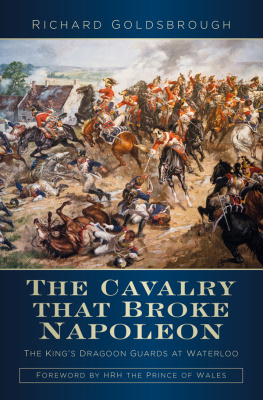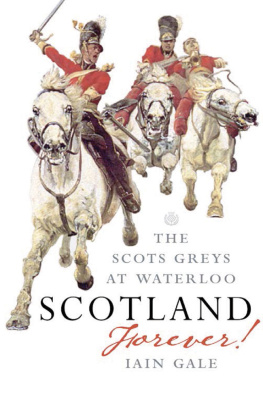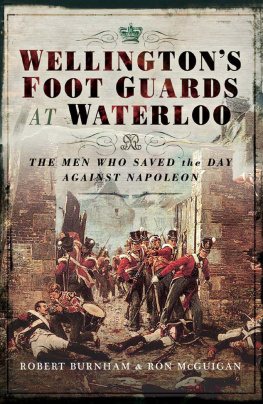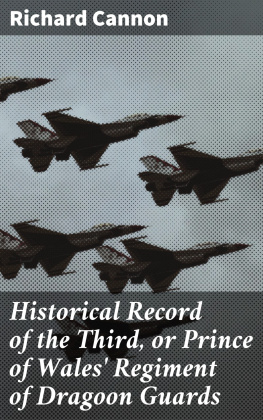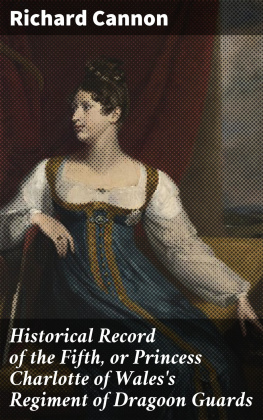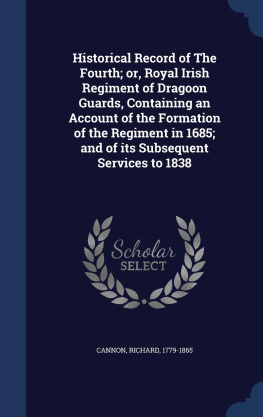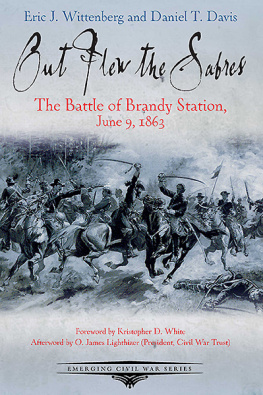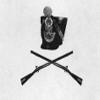THE CAVALRY
THAT BROKE
NAPOLEON
THE CAVALRY
THAT BROKE
NAPOLEON
THE KINGS DRAGOON GUARDS AT WATERLOO
RICHARD GOLDSBROUGH
FOREWORD BY HRH PRINCE CHARLES

For all the officers and men of the 1st or Kings
Dragoon Guards who fought at Waterloo and
for my father Harold (Bill) Goldsbrough. You
were all great men and will be remembered.
***
I often shed tears for the loss of my Brave
Comrades, I could never imagine that men could
fight as they did, they seem to have the strength
and courage of lions rather than of men.
RSM Barlow KDG
First published in 2016
The History Press
The Mill, Brimscombe Port
Stroud, Gloucestershire, GL5 2QG
www.thehistorypress.co.uk
This ebook edition first published in 2016
All rights reserved
Richard Goldsbrough, 2016
The right of Richard Goldsbrough to be identified as the Author of this work has been asserted in accordance with the Copyright, Designs and Patents Act 1988.
This ebook is copyright material and must not be copied, reproduced, transferred, distributed, leased, licensed or publicly performed or used in any way except as specifically permitted in writing by the publishers, as allowed under the terms and conditions under which it was purchased or as strictly permitted by applicable copyright law. Any unauthorised distribution or use of this text may be a direct infringement of the authors and publishers rights, and those responsible may be liable in law accordingly.
EPUB ISBN 978 0 7509 6959 8
Original typesetting by The History Press
eBook converted by Geethik Technologies
CONTENTS
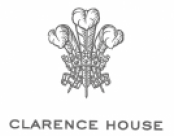
This book chronicles the contribution, and the fate, of a single Regiment, 1st The Kings Dragoon Guards (KDG), during the Battle of Waterloo, that epic struggle that defined European politics for almost a century. On 18th June 1815, the charge of the Household Brigade, of which the KDG represented almost half the formation sabre strength, threw back the French 1st Cuirassiers around La Haye Saint Farm. Remarkably, this was the same Regiment that the KDG had previously faced at the battles of Oudenarde (1708), Malplaquet (1709), and Fontenoy (1742). It was one of the pivotal actions of a momentous day, one that was filled with drama, danger, daring and death, and upon which the destiny of millions hung. In stopping the French cavalry in their tracks, the KDG bought for Wellington more precious time in which the Allied Army could hold the Waterloo ridgeline, in which the Prussians could close, inexorably, on Napoleons right flank and, ultimately, in which Napoleons ambitions to dominate Europe could be finally extinguished.
The KDG success was not without cost, and the Regiment suffered more casualties, both killed and wounded, than the whole of the Light Brigade in their famous charge at Balaclava. So few officers remained alive or unscathed at the close of the day that the Regimental Sergeant Major, WO1 Barlow, invited them to share a spartan meal with himself and the surviving senior ranks, a tradition that persists to the present day in their descendent Regiment, 1st The Queens Dragoon Guards (QDG).
I have been proud to be the Colonel-in-Chief of The Queens Dragoon Guards for the last 13 years, as was my Grandmother, Queen Elizabeth, The Queen Mother, before me. The current Regiment has served honourably in almost every conflict and campaign the British Army has taken part in since their formation in 1959: Malaya, Aden, Northern Ireland, Bosnia, Kosovo, Iraq and Afghanistan. They continue to display all the verve, loyalty, courage, resilience and steadfastness of their predecessors, and they continue to draw strength and inspiration from the example of 1st The Kings Dragoon Guards, and their remarkable heroism and sacrifice, on that extraordinary day in June 1815.

ACKNOWLEDGEMENTS
My first thanks go to HRH Prince Charles, Prince of Wales, for kindly writing the foreword to this book, which concerns the antecedent regiment to the Queens Dragoon Guards (QDG), of which he is the colonel-in-chief.
There are three people without whom this book would not have been published who must next be thanked. There is my friend and military historian Peter Caddick-Adams, who thoughtfully encouraged me. It was his introduction to Tim Newark, another accomplished historian and also a journalist, that ensured this book was commissioned; Tim promoted it in such a way that it was accepted by The History Press. The last of this trio to whom my thanks must go is Chrissy McMorris, the managing editor of that publisher, who has been responsible for ensuring my book went to print.
Special thanks must go to Philip Haythornthwaite, who, on the death of the 7th Marquess of Anglesey, must now be considered as the doyen of historians of the British cavalry of the Regency Period. Philip was tireless in his kind help in ensuring the finer details of the Kings Dragoon Guards (KDG) uniform and tactics were correctly described, as well as providing images and useful quotations. Another who has helped me produce this study of the KDG was Clive Morris, the curator of 1st The Queens Dragoon Guards Heritage Trust. His painstaking work of reproducing the service records of every KDG who fought at Waterloo would make a book in itself. On the basis of his work, much of the analysis of the KDG officers and soldiers origins and fates have been made. Another Cardiff-based supporter has been Gareth Glover, whose production of the Waterloo Archive series has underpinned an unbeatable knowledge of primary sources related to the battle. He has kindly pointed me in the right direction in my quest for information relating to the KDG and Waterloo. My old regiment, 1st The Queens Dragoon Guards, has been generous in its support of this book from the top down. My thanks go to the Colonel of the Regiment, Lt-Gen. Sir Simon Mayall KBE, Lt-Col Dan Duff, the commanding officer, and the officers and men, many of whom helped in some way with my demands for photographs of the regiments artwork. Thanks also must go to the Regimental Secretary, Lt-Col Richard (Basher) Brace, who has helped with this book and put up with me since I was the disorganised 4th Troop leader in A Squadron, of which he was the squadron sergeant-major. Also thanks must go to Jono Beatson-Hird and my fellow trustees of 1st The Queens Dragoon Guards Heritage Trust, who have supported me in this endeavour and in my desire to commemorate all the KDGs who fought during its finest hour on 18 June 1815.
Many other kind people have helped me in so many different ways. I list them below in no particular order and I apologise if I have mistakenly omitted anyone deserving of my thanks from this list: Mark Adkin, Anthony DArcy Irvine, Peter Archer, Rodney Atwood, Andrew Bamford, Professor Alessandro Barbero, Becs Barrett, Professor Ian Beckett, Jill Birtwistle, Viscount Brookeborough, Siobhan Brooks, Lady Frances Carter, Andrew Cormack, Raven Cozens-Hardy (photographs), Etienne Claude, Peter Dance of H. Tempest Ltd, Tricia Daten, Paul Dawson, Peter and Sylvia Derry, the Hon. Julia Elton, Andrew Field, Callum Graham (maps), Canon Anthony Hawley, John Lee, Robert Lowry, Elizabeth Mann, James Morrow, Rebecca Newton, John Julius Norwich, Ronald Pawly, Harry Pilcher, John Quicke, Col Alan Richmond, Andrew Roberts, Michael Russell, Agata Rutkowska, John Shead, Gen. Sir Rupert Smith, Elizabeth Vickers (photographs), Gen. Sir Christopher Wallace (who has sadly now passed away), Lt-Gen. Sir Barney White-Spunner, Pierre de Wit.
Next page
